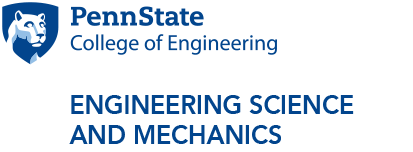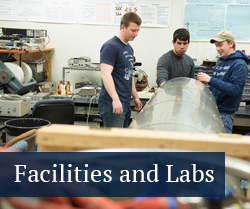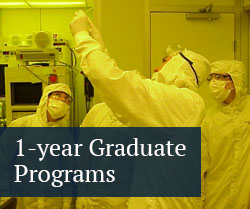Applied Mechanics and Biomechanics
The study of applied mechanics and biomechanics involves the response and interactions of materials, structures, and/or complex systems to a wide range of stimuli that can include potentially extreme combinations of mechanical forces, heat, chemical reactions, interacting surfaces, and radiation (across all wavelengths), to name a few.
Examples can include the behaviors of brain tissue under trauma, brittle materials exposed to rapid temperature changes (thermal shock), interacting surfaces and coatings under wear (tribology), muscle and bone with mechanical forces, laser-assisted plasma generation and surface modifications, wave behaviors for nondestructive evaluation methods, puncture mechanics of the annulus fibrosus as well as metals and structures under any combination of potential conditions.
A wide variety of materials are implied, ranging from biological (even at the cellular level), traditional metallic alloys, composites, and truly brittle ceramics and glasses.
Key Faculty:
Recent Research
Needle Damage and Disk Regeneration
While lower back pain as a result of degenerative disc disease has a huge socioeconomic impact on the health care system, current treatment options for degenerative disc disease (DDD) remain suboptimal.
Although intradiscal biological therapies hold some promise for treating degenerative disc disease, conventional approaches using a cutting needle for either diagnostics or therapeutic injection causes trauma to the annulus fibrosus, and may indeed accelerate the degeneration process. Moreover, cell leakage from the intradiscal injection site may induce osteophyte formation with additional degenerative affects.
For patients with significant annular tears, a more cost-effective and potentially successful option of intra-annular injection of biological agents may help facilitate the annular tear healing process, which in-turn restores the isolated intradiscal environment and protects the disc from further degeneration. However, it is clearly important to design a less traumatic needle, as well as develop models and better needling techniques for injection to preserve the integrity of intervertebral disc.
As such, the overall objective of the current research is to innovate interventional needling procedures (including vibration) and study needle tips used for novel regenerative treatments.
Thermal Shock and Fatigue of Ceramics
In this research, the behaviors of ceramics typically used for high-temperature energy and transportation applications are examined under extreme temperature changes to determine the ensuing states of damage and component reliability.
Probabilistic fracture mechanics principles are often required to assess the threat of failure and level of damage sustained by the often varied flaw populations inherent to these materials. Applications range from indirect heating, ceramic cannon barrels, all the way to laser machining and additive manufacturing methods.
In terms of laser machining and manufacturing efficiency, the methods just described have been successfully used with precisely applied stress states from multiple beams to lower fracture threats in a process known as Active Stressing. Similar ideas and approaches are now being explored for Additive Manufacturing methods for more traditional alloys utilizing lasers and directed energy beams.
Wear, Coatings, and Tribology
Current research includes efforts directed towards the creation and evaluation of cold-spray, self-lubricating coatings/alloys that are both repairable and functionally gradable using the Cold-Spray or High-Velocity-Particle-Consolidation (HVPC) method.
Unique micro- to nano-scale composite powders for the self-lubricating coating were first produced by depositing nickel (other suitable alloys can be used) on solid lubricant particles of hexagonal Boron-Nitride (hBN). The coating thickness ranged from several to tens of microns with the decreasing size showing increasing benefits including a significantly reduced coefficient of friction, a six-fold decreased in wear, all while tripling the bond strength.
Related research into micro-porous coatings with a high degree of interconnectivity have also been developed for applications ranging from enhanced boiling heat transfer for the emergency cooling of nuclear reactors (for In Vessel Retention or IVR of the molten core) to the reservoiring of liquid lubricants for reduced wear and friction.
Research Areas
- Advanced Materials and Devices
- Applied Mechanics and Biomechanics
- Brain Science and Neural Engineering
- Dynamic Systems, Acoustics, and Vibrations
- Emerging Manufacturing Processes for Materials, Tissues, and Devices
- Energy Infrastructure, Storage, and Devices
- Multiscale and Multiphysics Modeling, Computational Analysis
- Nanoscience, Bionanoscience, and Engineering
- Optoelectronics, Photonics, and Lasers
- Structural and Human Health Monitoring





